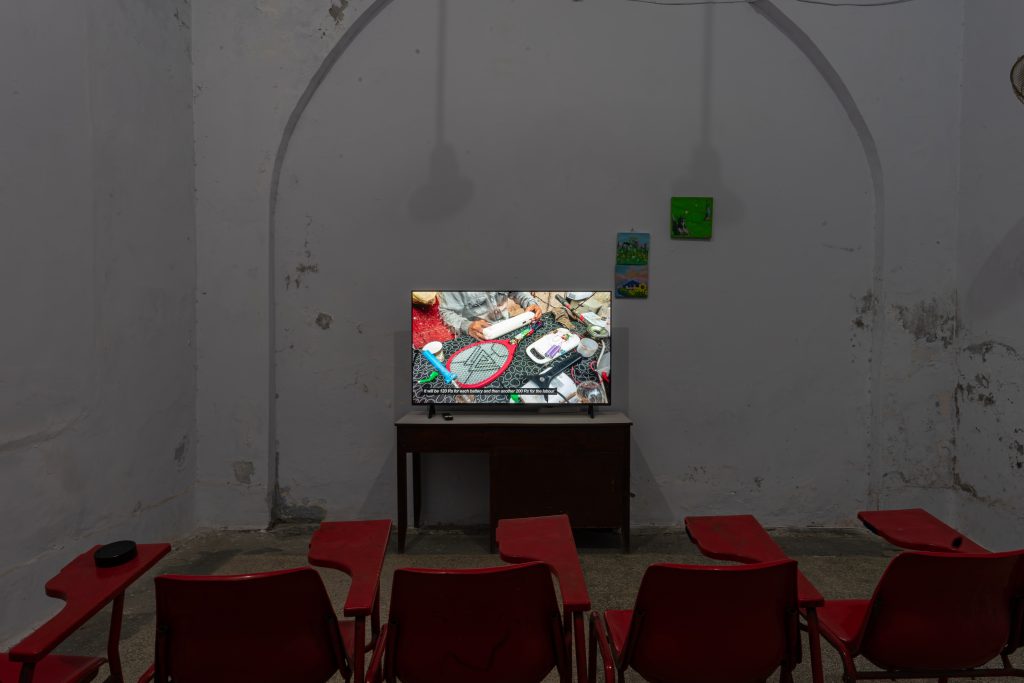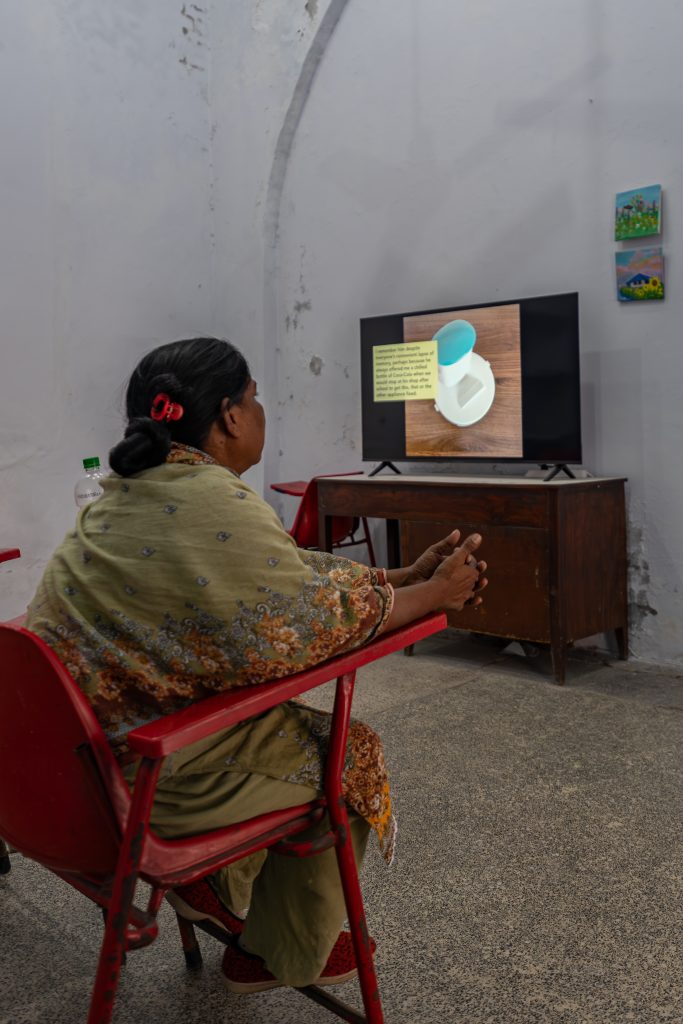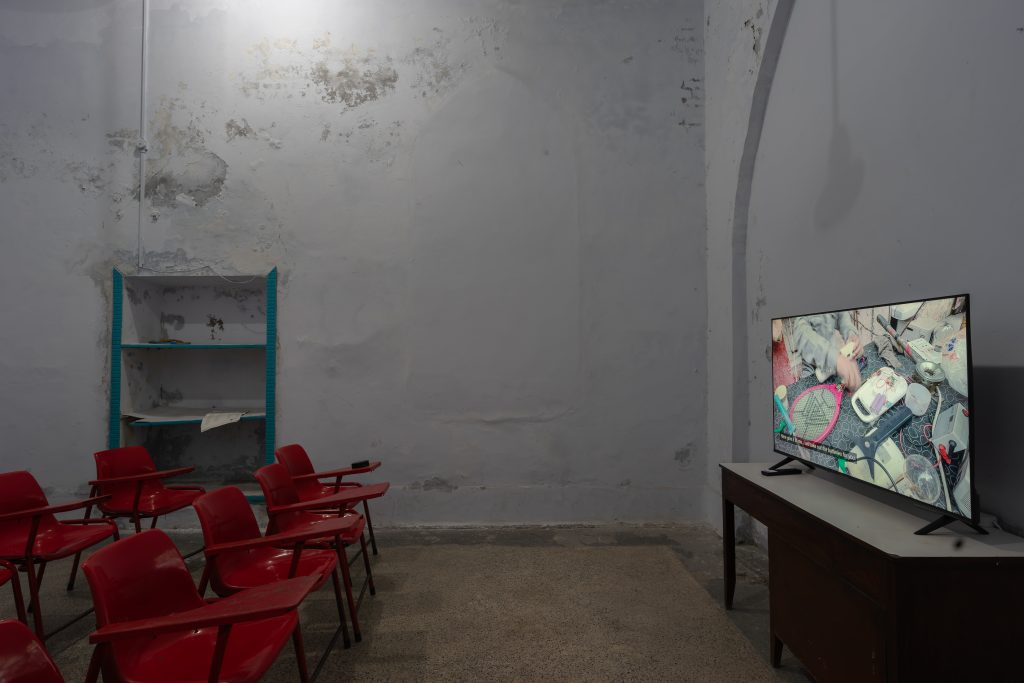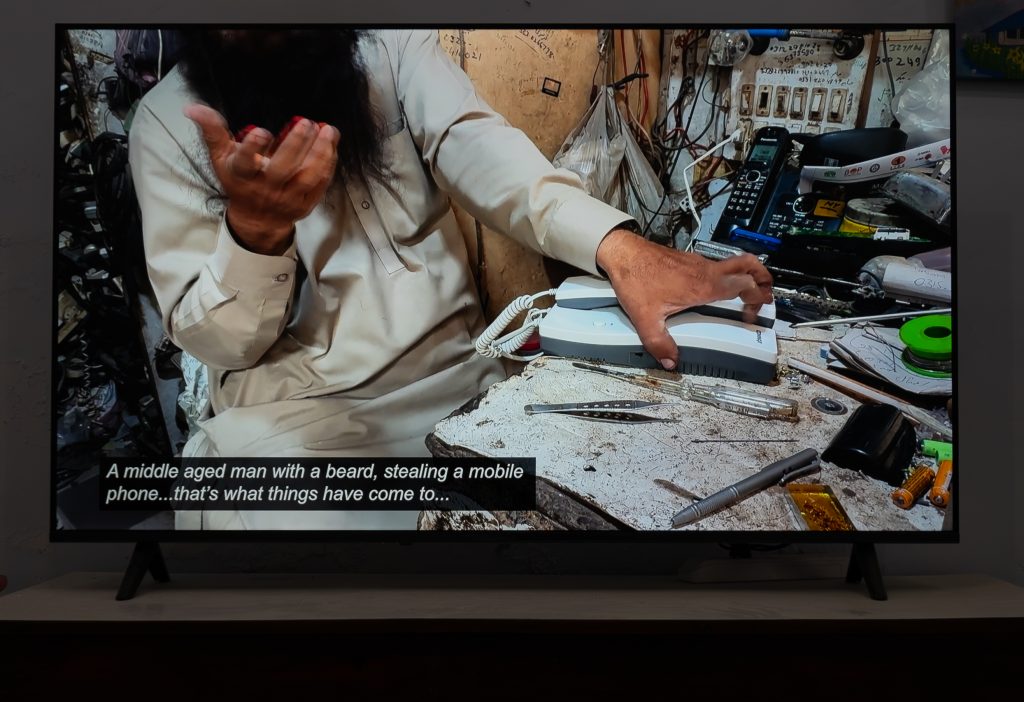Bani Abidi
KM-32, 2024
My Beloved, Do Not Ask Me for That Love Again, 2024
Color Plates, 2001
KM-32, detailing the history of the artist’s mother’s decades-old food processor, lovingly pays homage to jugaad, a bricolage practice born of South Asian ingenuity and thrift that extends the life of everyday objects and stands in contrast to consumerist society’s wasteful notions of obsolescence. The video highlights the skill of the repairmen who make possible the environmental impact of people’s everyday behavior and serve as a reminder that necessity can be the mother of invention.
Color Plates recirculates monochromatic ‘color charts’ assembled from scans of photocopied art history and textbooks from the 1990s belonging to the artist’s school friends. They emphasize the tones, textures, and material reality of Xeroxed books, through which art students in many parts of the global south were exposed to publications meant for circulation and distribution in Western metropolises. Abidi underscores the way that photocopying, rather than serving as a poor substitute, allowed for a kind of liberation from the source material.
Inspired by Faiz Ahmad Faiz’s eponymous poem, which places political commitment above personal concerns, My Beloved Do Not Ask Me for That Love Again consists of cloth banners tie-dyed in the colors of the Palestinian flag. Placed along Mall Road and exposed to the elements, they are meant to deteriorate over time. At the conclusion of the Biennale, they will be upcycled into tote bags that will further circulate Faiz’s poetry and its ethical reminder.
Bani Abidi (b. 1971) in Karachi is an artist based in Berlin. She earned a BFA from the National College of Arts, Lahore in 1994 and completed an MFA at the School of the Art Institute of Chicago in 1999. Abidi is a pioneer of video art in Pakistan, and also incorporates photography and performance in her practice, which often integrates humor and absurdity to comment on politics and culture. She has exhibited in multiple European cities and has had her works acquired by the Guggenheim Museum.
کے ایم- 32 فن کارہ کے والدہ کی عشروں پرانی فوڈ پروسیسر کی تاریخ بیان کرتی ہے۔ اپنے اس فن کے ذریعے فن کارہ نے جنوبی ایشیا میں جنم لینے والی ایک روایت جگاڑ کو خراج تحسین پیش کیا ہے اور باور کرایا ہے کہ روزمرہ استعمال ہونے والی اشیاء کو عرصہ دراز تک رواں دواں رکھا جا سکتا ہے بجائے اس کے کہ انہیں کچھ عرصہ بعد متروک سجھ کر رد کر دیا جائے جیسا کہ آجکل کے حد درجہ مادیت پسند سماج میں سمجھا جاتا ہے۔
رنگ آمیز تھالیاں ایک فن پارہ ہے جس کے ذریعے یک رنگ نقشوں کو دوبارہ سے نمودار کیا گیا ہے جو کہ فوٹو کاپی شدہ آرٹ
ہسٹری اور 1990 کی دہائی کی درستی کتب کے نمونوں سے اکٹھا کیے گئے جو کہ فن کار نے اپنے اسکول کے دور کے دوستوں سے حاصل کیے تھے۔
عابدی کے منصوبے نے واضح کیا ہے کہ فوٹو کاپی ایک غیر معتبر متبادل بننے کی بجائے اصلی مواد سے نجات کا ذریعہ ثابت ہو سکتا ہے۔
معروف فن کارہ بنی عابدی (پیدائش 1971) کراچی میں پیدا ہوئیں جبکہ ان دنوں برلن میں مقیم ہیں۔ انہوں نے 1994 میں نیشنل کالج آف آرٹس لاہور سے بی ایف اے جبکہ 1999 میں آرٹ انسٹی ٹیوٹ آف شکاگو سے ایم ایف اے کی ڈگری حاصل کی۔ عابدی نے پاکستان میں بصری آرٹ متعارف کروایا اور اپنے فن میں تصویر کشی اور پرفارمنس کو بھی شامل کیا جس کے ذریعے انہوں نے سیاست اور ثقافت پر مزاح اور خرافات کے انداز میں تبصرہ نگاری کی۔ ان کے فن کی نمائش کئی یورپی ملکوں میں ہو چکی ہے اور گوگن ہائیم میوزیم میں ان کے فنی شہکار آویزاں ہیں۔
KM-32 and My Beloved, Do Not Ask Me for That Love Again
Commissioned in 2024 by Lahore Biennale Foundation




